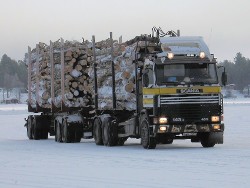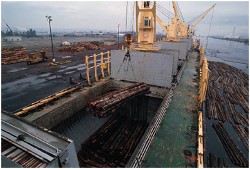BeWhere
BeWhere is a techno-economic engineering model for renewable energy systems optimization. It identifies the localization, size and technology of the renewable energy system that should be applied in in a specific region.
The economy of the supply chain is calculated with respect to the economy of scale of the corresponding bio-energy production plant.
FAST FACTS
BeWhere optimizes the size, location and technology of bio-energy production plants from the regional to the European level.
BeWhere can calculate the economic and environmental benefits of substituting bio-energy for fossil-fuel-based production.
Participants in IIASA's Young Scientists Summer Program have contributed to the development of BeWhere since 2008.
About BeWhere
BeWhere was developed at IIASA and Luleå University of Technology, Sweden, from 2006 onwards. In 2010 it was expanded by IIASA from the local and national levels to the EU27 level.
The model is under constant development. It now works for the allocation of solar, wind, hydro and bioenergy production plants. Under the bioenergy umbrella, the model can be applied for wood waste, crop residues, lignocellulosic industrial waste and three different biofuel technologies (second-generation ethanol, methanol, and Fischer-Tropsch diesel). IIASA has implemented the Austrian, Finish and Swedish forestry wood market at a very detailed level in BeWhere. This now functions as a key methodology at the aggregated EU27 level.

Background
First-generation biofuels from sugar, starch, and vegetable oil did not achieve the greenhouse gas emission reductions hoped for. Some also had the added disadvantage of competing for land with food production. Growing "food" like corn crops to produce ethanol for vehicles has been heavily criticized. Second-generation biofuels using non-food crops or sources such as forestry residues, municipal waste, algae, biomass grown on non-arable land, or certified wood, are a more sustainable source of biofuel production. However, very large production plants are required to make production costs competitive.
Challenges

Reaching economies of scale for biofuels can cause logistical problems. Biomass feedstock is often located in the countryside, while production plants are frequently close to ports to facilitate transport by water. The transportation of feedstock from the countryside to the production plant can cause heavy traffic, producing adverse social and environmental effects.
This is why the optimal geographical location and size of the production plant with respect to feedstock and demand location needs to be determined, prior to plant investment and construction, and this can be done using BeWhere.
Other energy technologies and commodities
Even though BeWhere is developed with the aim to optimize bio-energy production and distribution, other renewable energy technologies may be implemented. Current versions of the model consider e.g. the optimal locations of hydro, wind and solar power. BeWhere may also be used to optimize production and logistics of other non-energy commodities, like steel or food.

Meet the BEWHERE Team
BEWHERE and Young Scientists Summer Program (YSSP)
BEWHERE Publications
Options: Feature Articles


